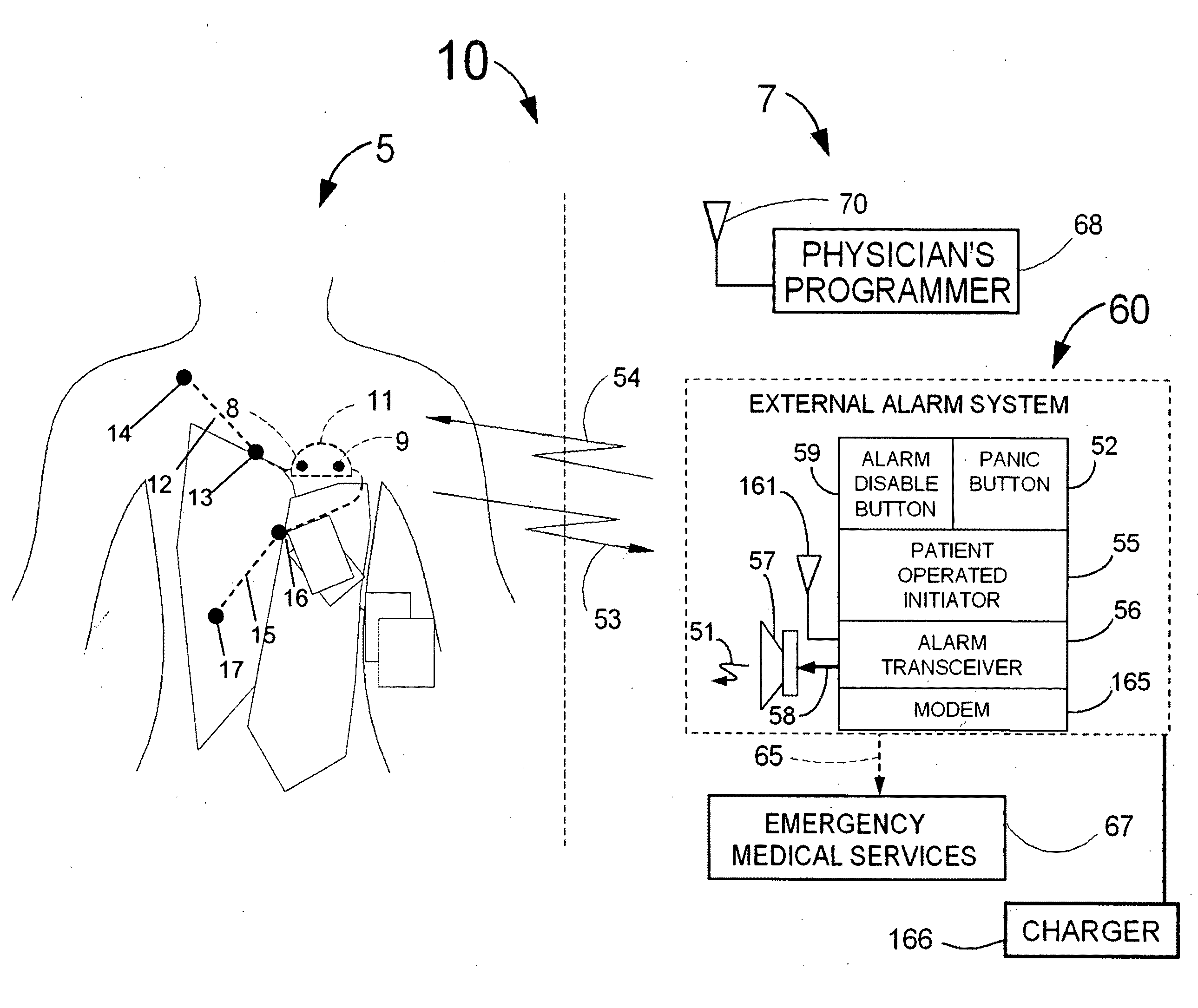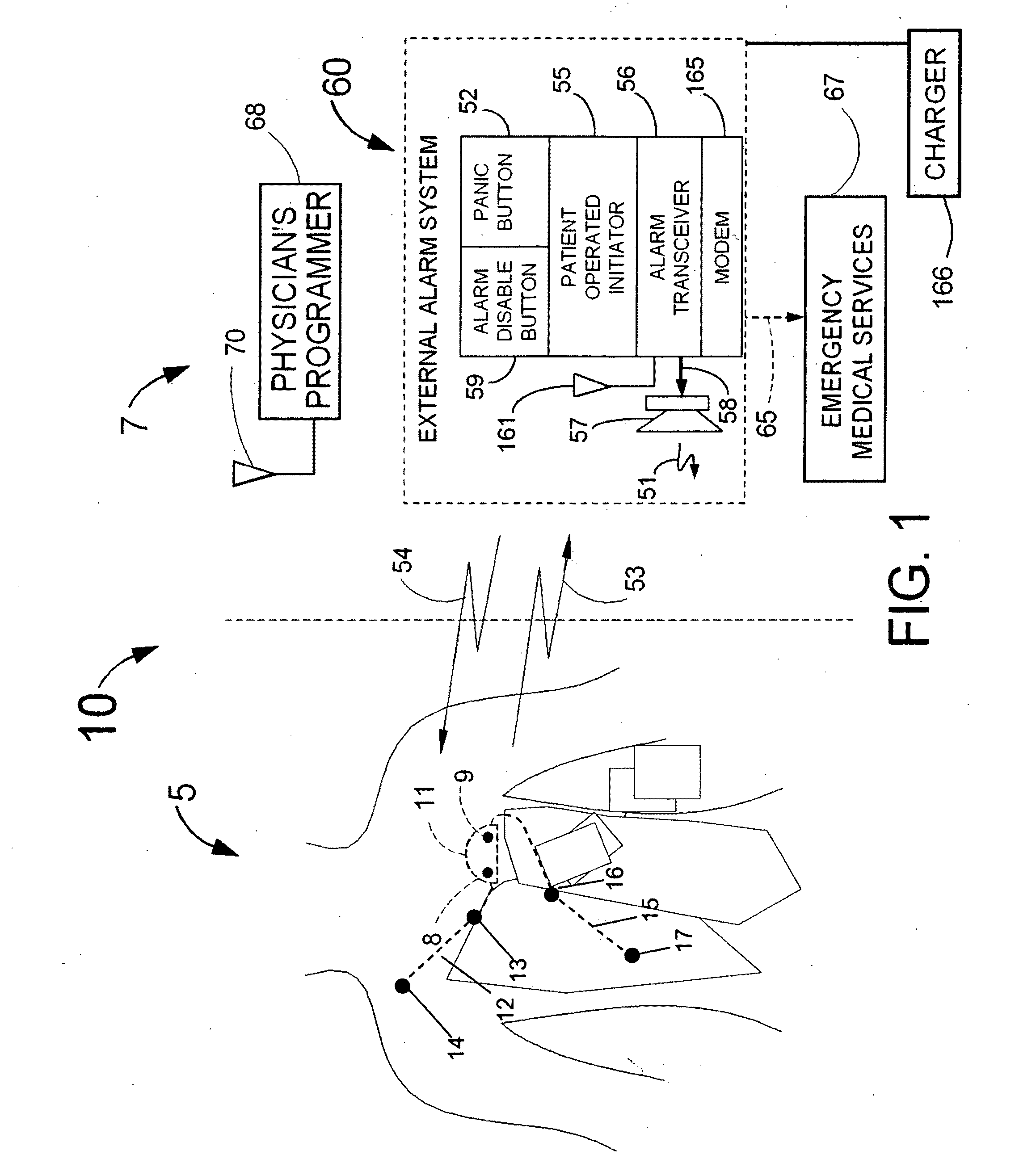Heart rate correction system and methods for the detection of cardiac events
- Summary
- Abstract
- Description
- Claims
- Application Information
AI Technical Summary
Benefits of technology
Problems solved by technology
Method used
Image
Examples
Embodiment Construction
[0036]Architecture
[0037]FIG. 1 illustrates one embodiment of a system 10 comprising an implanted cardiac diagnostic device 5 and external equipment 7. The battery powered cardiac diagnostic device 5 contains electronic circuitry that can detect a cardiac event such as an acute myocardial infarction or arrhythmia and warn the patient when the event, or a clinically relevant precursor, occurs. The cardiac diagnostic device 5 can store the patient's electrogram for later readout and can send wireless signals 53 to and receive wireless signals 54 from the external equipment 7. The functioning of the cardiac diagnostic device 5 will be explained in greater detail with the assistance of FIG. 2.
[0038]The cardiac diagnostic device 5 receives electrical signals from subcutaneous or body surface leads 12 and 15. Clavicle lead 12 comprises electrodes 13 and 14 with polarity hereafter defined as the difference potential measured between electrode 13 and electrode 14. Right side lead 15 comprise...
PUM
 Login to View More
Login to View More Abstract
Description
Claims
Application Information
 Login to View More
Login to View More - R&D
- Intellectual Property
- Life Sciences
- Materials
- Tech Scout
- Unparalleled Data Quality
- Higher Quality Content
- 60% Fewer Hallucinations
Browse by: Latest US Patents, China's latest patents, Technical Efficacy Thesaurus, Application Domain, Technology Topic, Popular Technical Reports.
© 2025 PatSnap. All rights reserved.Legal|Privacy policy|Modern Slavery Act Transparency Statement|Sitemap|About US| Contact US: help@patsnap.com



